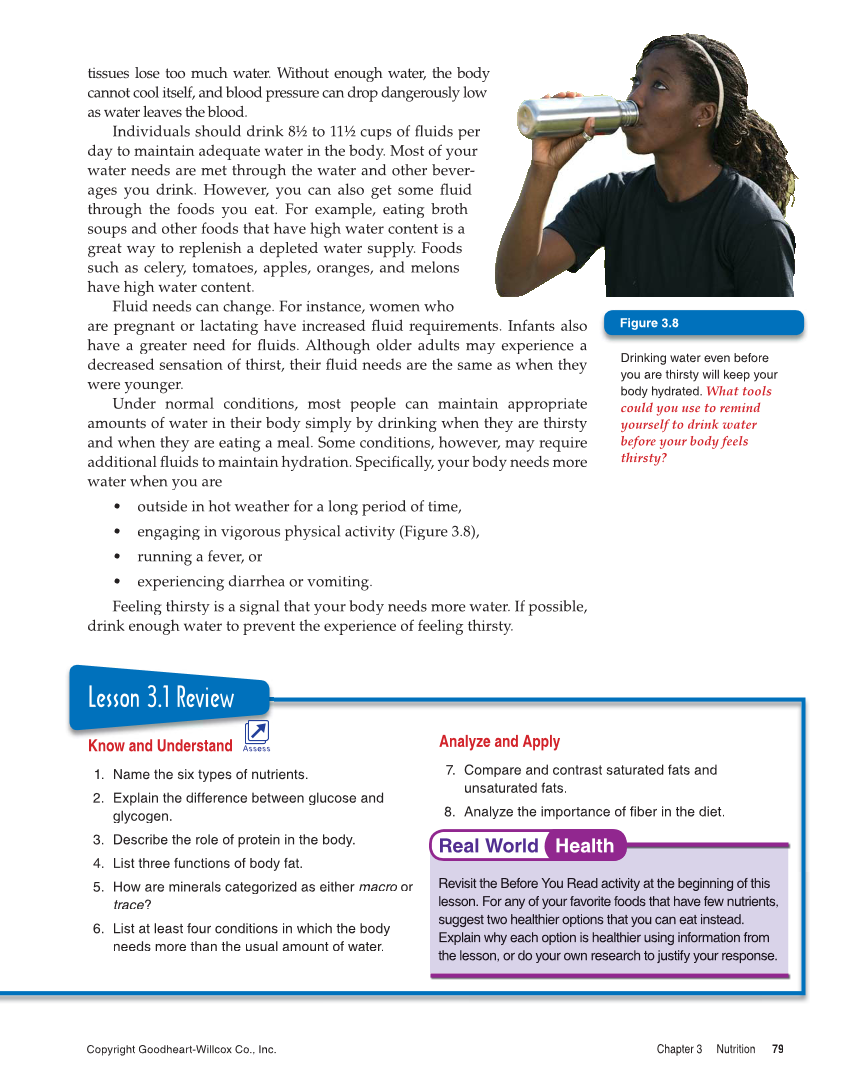Copyright Goodheart-Willcox Co., Inc. Chapter 3 Nutrition 79 tissues lose too much water. Without enough water, the body cannot cool itself, and blood pressure can drop dangerously low as water leaves the blood. Individuals should drink 8½ to 11½ cups of fl uids per fl day to maintain adequate water in the body. Most of your water needs are met through the water and other bever- ages you drink. However, you can also get some fluid fl through the foods you eat. For example, eating broth soups and other foods that have high water content is a great way to replenish a depleted water supply. Foods such as celery, tomatoes, apples, oranges, and melons have high water content. Fluid needs can change. For instance, women who are pregnant or lactating have increased fluid requirements. Infants also fl have a greater need for fl uids. Although older adults may experience a fl decreased sensation of thirst, their fl uid needs are the same as when they fl were younger. Under normal conditions, most people can maintain appropriate amounts of water in their body simply by drinking when they are thirsty and when they are eating a meal. Some conditions, however, may require additional fl uids to maintain hydration. Specifically, fl your body needs more fi water when you are • outside in hot weather for a long period of time, • engaging in vigorous physical activity (Figure 3.8), • running a fever, or • experiencing diarrhea or vomiting. Feeling thirsty is a signal that your body needs more water. If possible, drink enough water to prevent the experience of feeling thirsty. Drinking water even before you are thirsty will keep your body hydrated. What tools could you use to remind yourself to drink water before your body feels thirsty? Figure 3.8 Lesson 3.1 Review Know and Understand 1. Name the six types of nutrients. 2. Explain the difference between glucose u and glycogen. 3. Describe the role of protein in the body. 4. List three functions of body fat. 5. How are minerals categorized as either e macro or o trace? 6. List at least four conditions in which c the body needs more than the usual amoun nt of water. Revisit the Before You Read activity at the beginning of this lesson. For any of your favorite foods that have few nutrients, suggest two healthier options that you can eat instead. Explain why each option is healthier using information from the lesson, or do your own research to justify your response. Real World Health Analyze and Apply 7. Compare and contrast saturated fats and unsaturated fats. 8. Analyze the importance of fi ber in the diet. Assess
